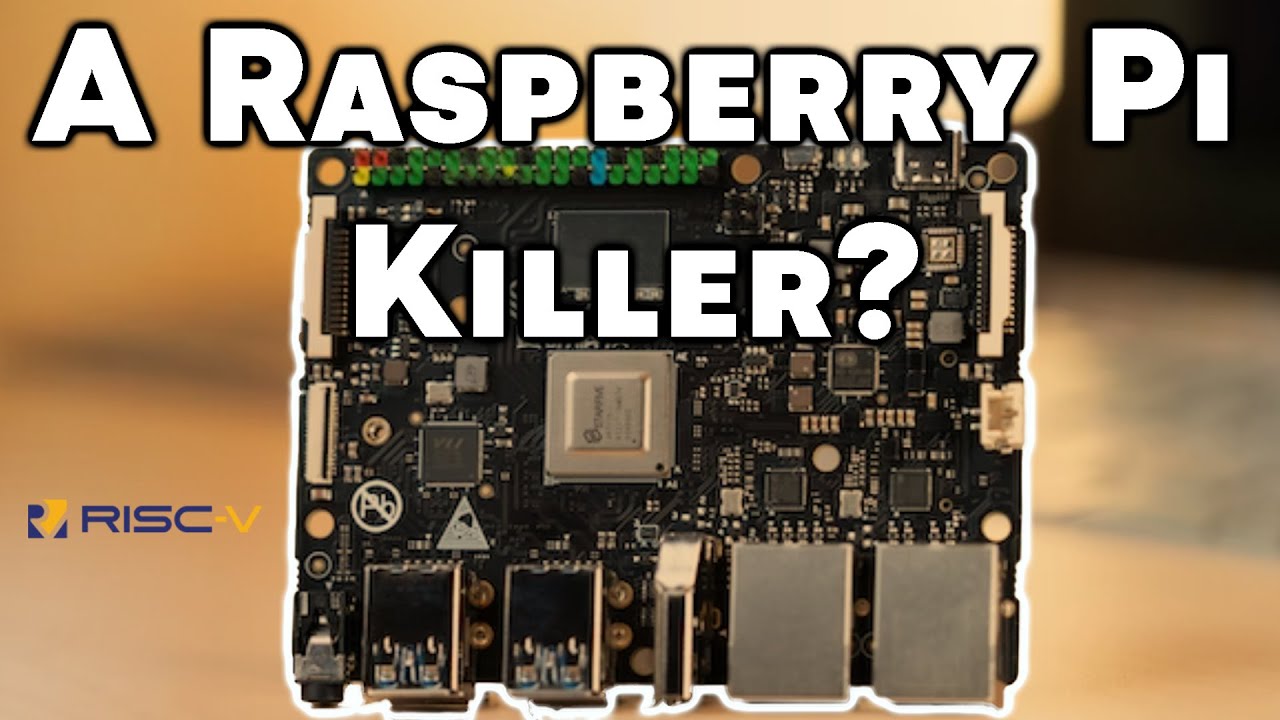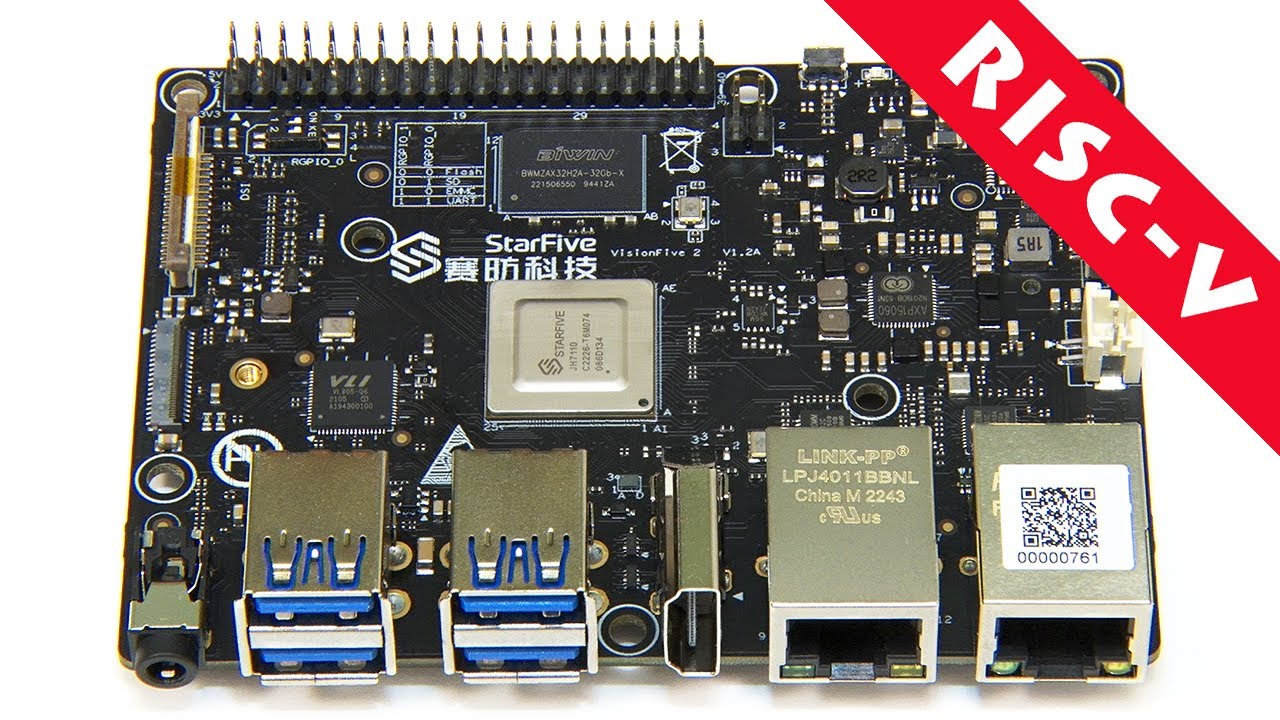Enjoy the read!
I’ll admit it is not fantastic, but it can never be 500MB/sec or higher with a VF2 board because it is a 1x lane PCIe Gen2, that is the theoretical upper limit if there were no overheads at all. So getting 31-34% of the maximum possible theoretical performance while still debugged new hardware is pretty good. First step get it working, second step get it working for more devices, third step don’t break anything and boosting performance.
The uncompressed image would not fit in my 8GB MicroSD card, so I flashed it to a 32GB MicroSD card which took close to 45 minutes to complete.
I was not aware that Jean-Luc now has his articles written by an trainee. ![]()
I have been reading CNX for years and like to use the professionally written articles as a reference, but I found this review disappointing.
I was not aware that Jean-Luc now has his articles written by an trainee.
Maybe ChatGPT wrote it
I took that as more a criticism that there is no minimal image available. Also he doesn’t say how he did the transfer; my desktop is pig slow writing it’s card slot and I’ve had it take forever creating a PI desktop image. Maybe he was doing it on a Pi ![]()
This isn’t trainee writing, just a tech journalist being honest.
I agree with @SunWukong in wondering, what the author is writing. Just another probe of tech journalism to the point from the article:
“I moved to another location and tried with another display and it did not work at all. But that’s because my MicroSD card apparently failed. I had to take a MicroSD card from my security camera to carry on and purchased five Class A1 MicroSD cards online for future reviews.”
The problem is, that he wrote down the article in a hurry, while actually still struggling with the subject and everything else. The Debian-69 image does have a minimal image of 1.7MB, which would have easily fit on his 8MB card.
Yes, getting a brand new developer board for a new platform going, which was released as early as possible, can be a bit rough, and it is, e.g. needing to patch u-boot, not every driver present, etc. But he should have been aware of that, imo, and properly reflected this in the article. I find, he is completely missing the point, what this board and processor means in the overall process, and perhaps simply does not know it.
My mistake was not taking enough time to critique the article. But a journalist who starts his work with incomplete tools, such as a suitable power supply unit and some unused SD cards in a suitable size, and does not take enough time, does not deserve a more detailed critique.
But what do I know, maybe it is common to send a suitable power supply and an SD card prepared with current system for a review? ![]()
From the first paragraph:
But note that won’t exactly be a review since the board is unreviewable at this time. It’s really for early adopters and there are many issues to solve, and in this post, I’ll report what works and what doesn’t, and some of the challenges I encountered just to install the OS…
Given that, I didn’t have any real problems with this article, when I read it, which was before it was mentioned here.
Now, if you wanna see a ARM Pi Fanboi proving to his teenage cohorts that RiscV is useless, watch this:
…and give it a thumbs down.
Thank you @easytarget, for this link to another review.
I found the CNX article disappointing mainly, because the author misses not only time, tools, pleasure but also, and that was my impression, overall knowledge about the risc-v development. So he simply missed the point that this board is not exactly for the nth+1 arm soc, but is a different kind of news, which makes this article so ininspired.
Gary from your video is clearly aware of that, and while he acknowledges (@1:10) that he does not always see the point for Risc-V, he knows, that the board is of particular interest at least for its industrial branch and does quite something to transport this news to his audience, too. For me, this makes quite some difference in journalism.
I’m a big fan of cnx-software. I went out and backed VF2 because CNX made me aware of it.
How thorough is CNX’s VF2 review? It was blunt and to the point. He noticed the VF2 doesn’t handle as many pcie lanes which explains why the nvme io isn’t as fast as it usually could be. Everybody who read the specs and still backed the project knew what they were getting into so there are no disappointments for the backers. CNX couldn’t get the desktop up and was battling firmware update issues like the rest of us. All honest observations. It’s still early days.
I am certain, the moment the desktop and the firmware reaches adequate maturity, CNX will promptly report the successful milestone.
The moment Starfive comes out with a newer faster version of their hardware, I’ll back them again.
Gary is actually very funny and enjoyed watching his VF2 review. He’s fair and honest and got an led blink using the VF2 gpio pins which was cool.
Each to their own I guess.
‘Gary Pi-splains’ was how I took it, Guess I got grumpy when he runs ‘my tests, which prove the P3 is much faster’ etc. I probably switched off at that point.
As for getting LED’s flashing, he was just copying the Explaining Computers video, who did it a month earlier with far less drama.
I got confused, Mr. Barnatt was the one that did the led gpio demo. There is much effort there when you think of it. Getting all this equipment, getting the VF2 set up correctly, then succeeding in installing the VF2 python packages along with bread board setup. Much to be admired. He made it look so easy and for that kind of work it looks quite capable of doing whatever the Pi’s can in that regard. In other words the VF2 is ready for breadboard tinkering right now.
Mr. Barnatt’s bubbling enthusiasm to share all the details to make all of this happen resonates with me for sure. So does Gary. There’s something to gain from everyone’s perspective.
![]() you are right, of course. Thankyou.
you are right, of course. Thankyou.
Here is a review by someone who actually accomplished something of note.
Hit to 90 degree? is that true ![]()
Yep… I wondered about that too, wondered how accurate their thermometer is… I see no evidence they were monitoring the core temp on the cmdline. But I guess no heatsink and a nice draft free corner in a warm workshop might let the temp get that high under load.

